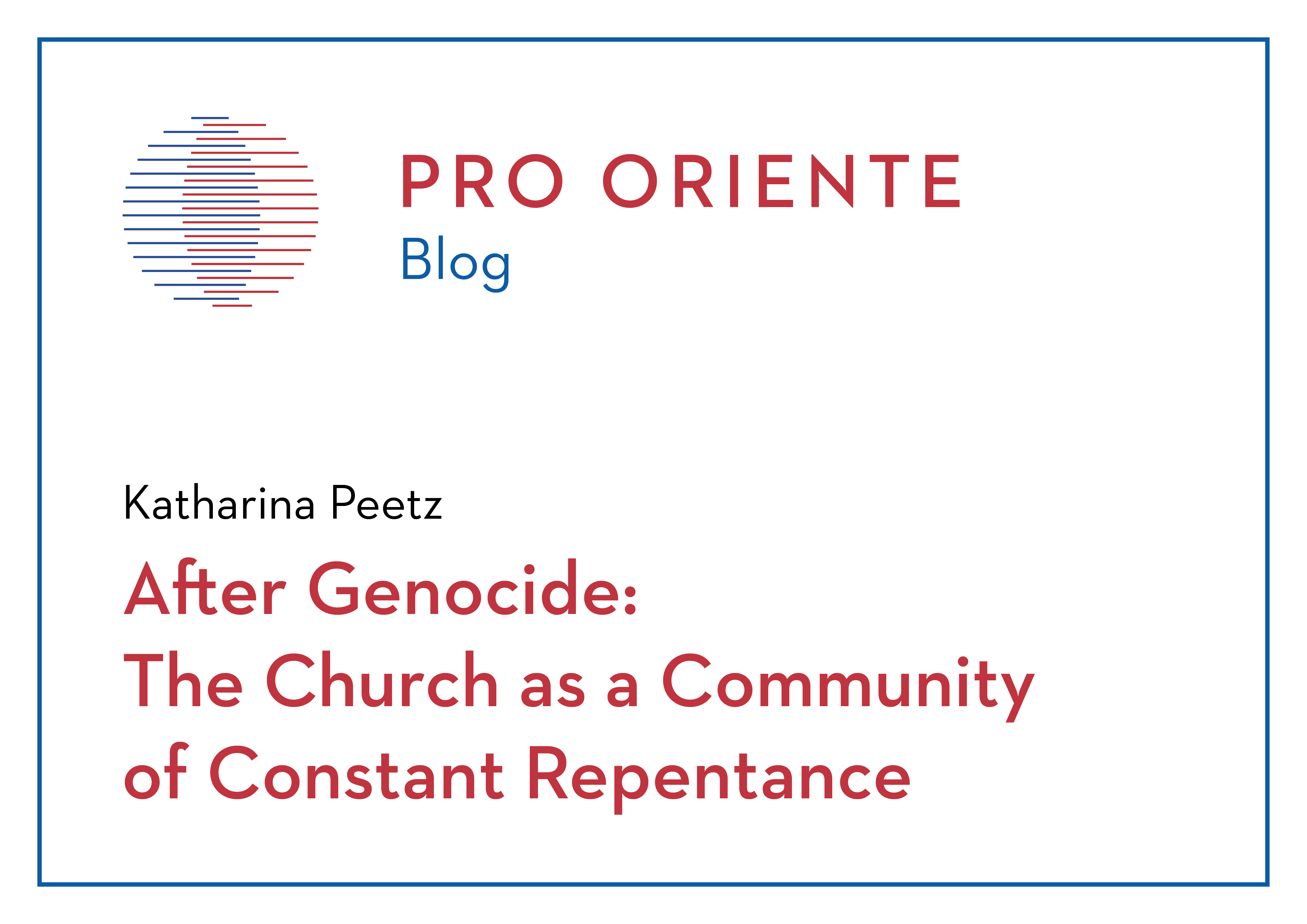After Genocide: The Church as a Community of Constant Repentance
05. März 2024
Thema: Healing of Wounded Memories

The holy Church is not a societas perfecta that exists outside of history, human error or the limitations of time and space (Flanagan 2018). It can be assured of its own holiness only as a result of God’s grace and his decision to answer the Church’s epicletic plea for holiness. As the community of the faithful the Church is in constant need of sanctification (Böhnke 2014). Repentance in this sense means a lifelong dynamic of spiritual and existential transformation, a holistic metamorphosis of the whole Church: metanoia (Pilipenko 2013).
As the Church is in constant need of renewal, practices of holistic ecclesial repentance are crucial.
I would like to illustrate this with regard to the 1994 Rwandan Genocide that unfolded over a period of three months and led to the murder of an estimated 800,000 to 1,000,000 Tutsis, along with some Hutus who tried to save them.
The actions of Christian Churches during genocide were ambivalent: Some church members demonstrated remarkable courage by protecting victims, irrespective of their ethnic backgrounds, often putting their own lives at risk to do so. However, there were many clerics, monks, nuns, and laypersons directly implicated in genocide. Church buildings who once were considered safe spaces turned into slaughterhouses (Peetz 2023). What is more, struggles over power within the Christian Churches led some Church leaders to form alliances with the genocidal regime and to accept genocide as a “means of eliminating challenges to their own authority within the churches” (Longman 2001).
Drawing upon the processual and community-inclusive tradition of the early Church, ecclesial repentance in the face of the Rwandan genocide cannot be solely a private or a one-time-affair. The injustice of genocidal mass killing and the suffering of victims must be publicly named again and again, they must be known and dealt with as injustices that affect the core of the church. This includes radical transparency and truth-finding, the taking-on of the perspectives of those affected and efforts to ensure that justice is done to them. Part of the church's repentance is certainly also the confrontation with its own community, which has collectively looked away and often continues to look away.
I find the image of fermenting leaven chosen by Katharina von Kellenbach to be helpful for symbolically illustrating this painful and strenuous practice of continuous repentance on the part of the Church:
"It stinks when grapes ferment and leaven works, but the result is life-giving. The process of symbolic repentance is painful and exhausting, and only becomes bearable and worthwhile in the hope of radical renewal of guilt-ridden individuals and institutions” (von Kellenbach 2018).
A sustainable, hope-giving conversion, indeed a re-vision of the Church in accordance to the true gospel - as the fundamental theologian Julia Enxing aptly puts it - will only succeed through a continuous, communal practice of repentance that is consistently oriented towards those affected and that allows the "sting of victims" to change the face of the church (Enxing 2018). This includes, in my eyes, the confession of the Church as both holy and sinful.
With regard to Rwanda Pope Francis confessed “sins and failures of the Church” in regard to the genocide (Pope Francis 2017) and in a creative re-actualization of the early Church’s self-understanding, different grassroots initiatives also started multi-layered repentance processes. One of these processes deals with the fact that genocidal crimes affected not only the victims but also the Rwandan society, the Church as well as God. Rituals of exclusion and reincorporation are used to illustrate the injury respective healing of the community of God’s children. At the beginning perpetrators decide to abstain from sacraments and are ritually excluded from the Church. Pastoral counselors are at their side when start the journey of recognizing their own guilt, of feeling remorse, confessing and active repentance. Simultaneously, survivors are pastorally encouraged and accompanied in their process of trauma processing and inner healing. If both sides are willing, perpetrators and survivors meet in front of god during the sacrament of reconciliation. It is here were the role of the survivors is crucial. Only if they perceive and give testimony to a real change of heart and mind of the perpetrator, the perpetrators are re-integrated ritually in the Church in a communal reconciliation service followed by a communal reconciliation feast (Carney 2015, Peetz 2019, Peetz 2023).
For me, it is especially in such grassroots initiatives that the Church after genocide reveals itself as a pilgrim community in constant need of repentance and renewal.



